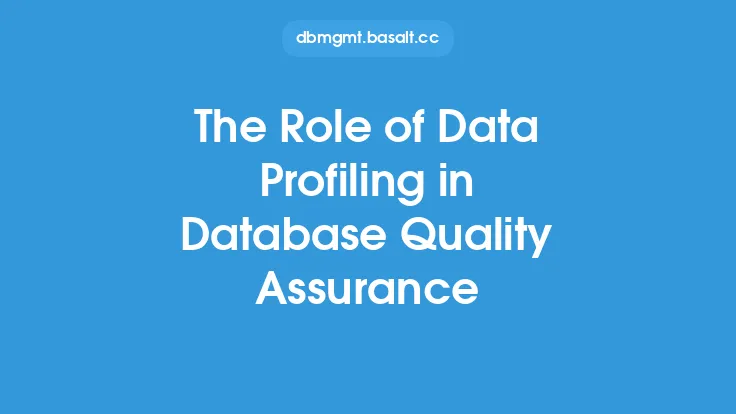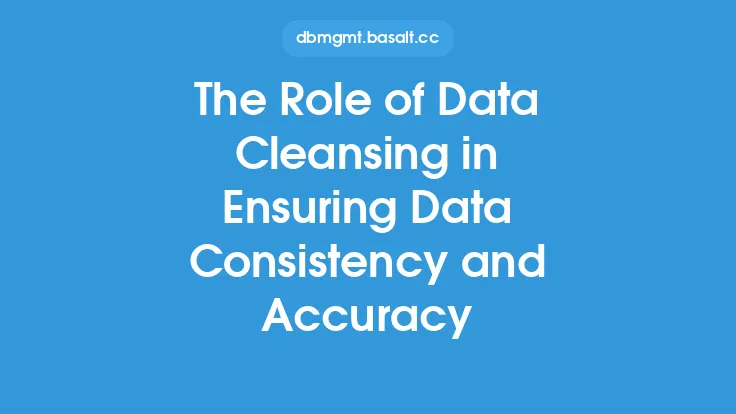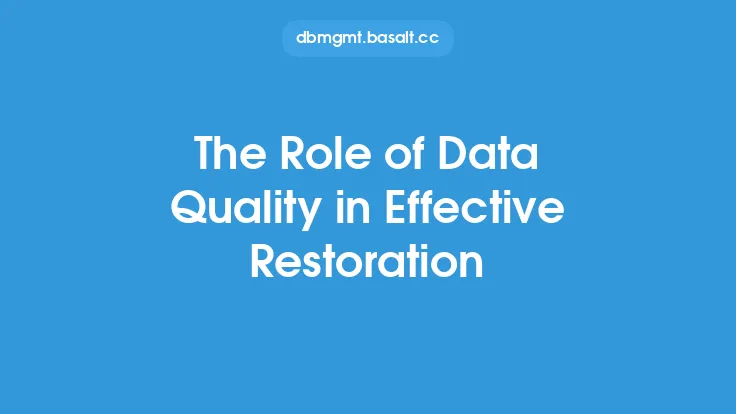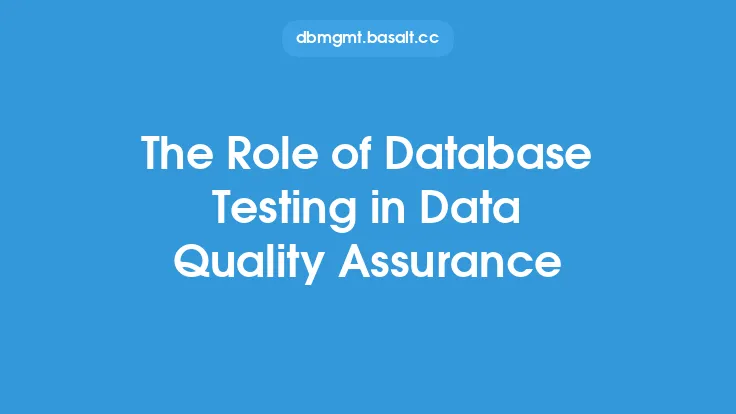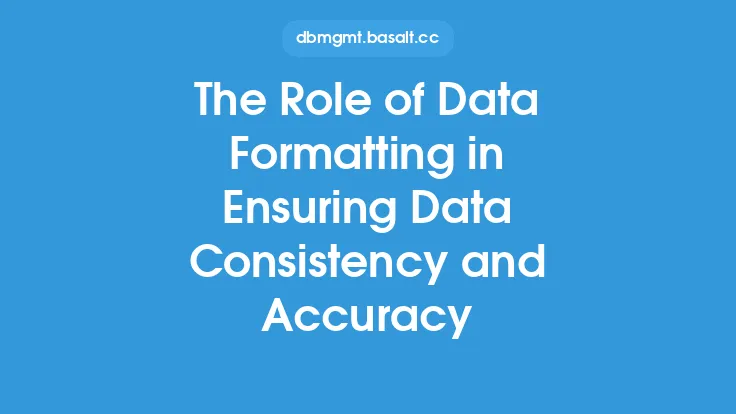Data profiling is a crucial process in ensuring data quality, as it involves analyzing and understanding the distribution of data values within a dataset. This process helps to identify patterns, trends, and correlations within the data, which can be used to improve data quality and make informed decisions. Data profiling typically involves statistical analysis and data visualization techniques to summarize and describe the basic features of the data.
Introduction to Data Profiling
Data profiling is an essential step in the data quality process, as it provides a comprehensive understanding of the data's structure, content, and relationships. By applying data profiling techniques, organizations can identify data quality issues, such as missing or duplicate values, invalid or inconsistent data, and data that is not conforming to expected formats or standards. Data profiling can be performed on various types of data, including structured, semi-structured, and unstructured data, and can be applied to different data sources, such as databases, data warehouses, and files.
Types of Data Profiling
There are several types of data profiling, including:
- Column profiling: This type of profiling involves analyzing individual columns or fields within a dataset to understand the distribution of values, data types, and formats.
- Row profiling: This type of profiling involves analyzing individual rows or records within a dataset to understand the relationships between columns and identify patterns or anomalies.
- Cross-column profiling: This type of profiling involves analyzing the relationships between multiple columns or fields within a dataset to identify correlations, dependencies, and data quality issues.
- Cross-table profiling: This type of profiling involves analyzing the relationships between multiple tables or datasets to identify data quality issues, such as inconsistencies or redundancies.
Data Profiling Techniques
Several data profiling techniques can be applied to analyze and understand the distribution of data values within a dataset. These techniques include:
- Statistical analysis: This involves applying statistical methods, such as mean, median, mode, and standard deviation, to summarize and describe the basic features of the data.
- Data visualization: This involves using graphical representations, such as histograms, bar charts, and scatter plots, to visualize the distribution of data values and identify patterns or trends.
- Data mining: This involves applying data mining techniques, such as clustering, decision trees, and neural networks, to identify complex patterns and relationships within the data.
- Data quality metrics: This involves applying metrics, such as data completeness, data consistency, and data accuracy, to measure the quality of the data and identify areas for improvement.
Benefits of Data Profiling
Data profiling provides several benefits, including:
- Improved data quality: Data profiling helps to identify data quality issues, such as missing or duplicate values, invalid or inconsistent data, and data that is not conforming to expected formats or standards.
- Increased data understanding: Data profiling provides a comprehensive understanding of the data's structure, content, and relationships, which can be used to make informed decisions.
- Enhanced data analysis: Data profiling helps to identify patterns, trends, and correlations within the data, which can be used to improve data analysis and reporting.
- Better decision making: Data profiling provides a solid foundation for decision making, as it helps to ensure that the data is accurate, complete, and consistent.
Challenges and Limitations of Data Profiling
Data profiling is not without its challenges and limitations. Some of the common challenges and limitations include:
- Data complexity: Large and complex datasets can be difficult to profile, especially if they contain multiple tables, columns, and relationships.
- Data volume: Large volumes of data can be challenging to profile, especially if the data is stored in multiple locations or formats.
- Data variety: Diverse data types and formats can be challenging to profile, especially if they require specialized tools or techniques.
- Data quality issues: Poor data quality can make it difficult to profile the data, especially if the data contains missing, duplicate, or invalid values.
Best Practices for Data Profiling
To get the most out of data profiling, several best practices can be applied, including:
- Define clear objectives: Clearly define the objectives of the data profiling exercise, including the types of data to be profiled and the metrics to be used.
- Choose the right tools: Choose the right tools and techniques for data profiling, including statistical analysis, data visualization, and data mining.
- Ensure data quality: Ensure that the data is of high quality, including complete, accurate, and consistent data.
- Use data quality metrics: Use data quality metrics, such as data completeness, data consistency, and data accuracy, to measure the quality of the data and identify areas for improvement.
- Continuously monitor and update: Continuously monitor and update the data profiling process to ensure that the data remains accurate, complete, and consistent over time.
Conclusion
Data profiling is a critical process in ensuring data quality, as it provides a comprehensive understanding of the data's structure, content, and relationships. By applying data profiling techniques, organizations can identify data quality issues, improve data analysis and reporting, and make informed decisions. While data profiling is not without its challenges and limitations, several best practices can be applied to get the most out of the process. By following these best practices and using the right tools and techniques, organizations can ensure that their data is accurate, complete, and consistent, and that it provides a solid foundation for decision making.
